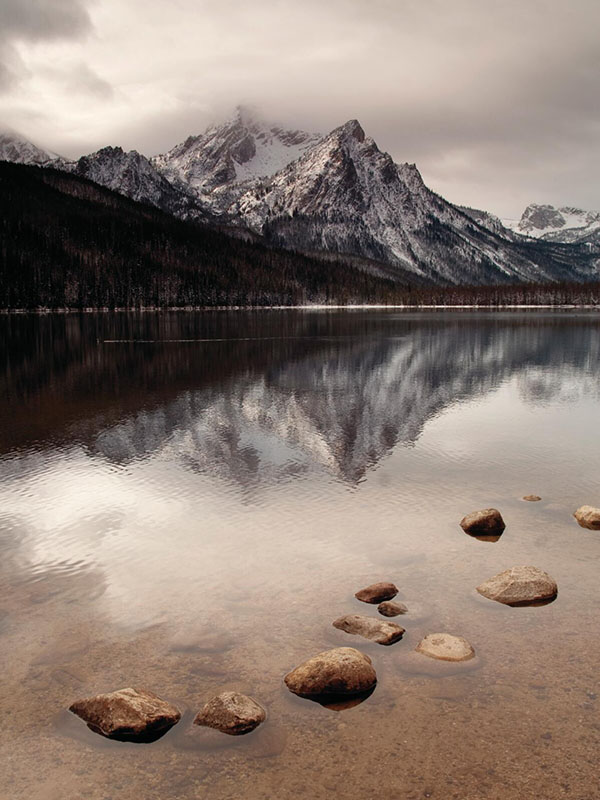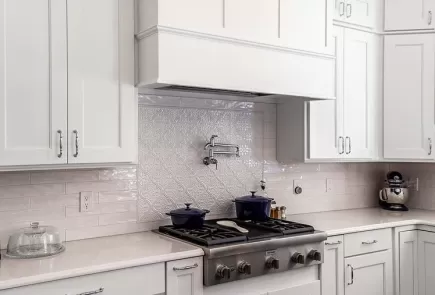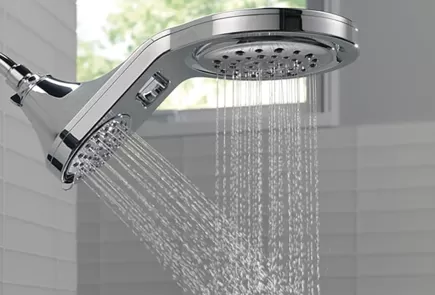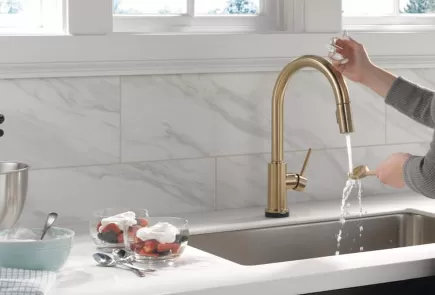More than half of Americans are concerned about the quality of water they use for drinking and bathing, and that number has grown over the past few years. But how do you know if there's a problem with the water quality in your home? Hopefully, this water quality article can help. You'll learn where drinking water comes from, what safety regulations help protect us, and how to find valuable information about water quality in your area.
What Is Water Quality?
Water quality refers to the suitability of water for its intended use, such as drinking, bathing, or recreation. For example, it may be okay to swim in a lake, but you don't want to drink the lake water—at least not unless it's treated first. ¿Por qué? Because even if the water is crystal clear and odorless, it may contain harmful, microscopic elements, such as E. coli or Giardia, that could make you sick if you drink it.
Why Water Quality Matters

People use water every day for drinking, cooking and bathing. If the water supply has harmful contaminants (e.g., high levels of lead, bacteria or chemicals), it may cause health problems such as skin rashes. Water may also contain calcium, sediment and other materials that can cause buildup or clogs in your pipes and fixtures, and some water sources (e.g., wells) have high levels of iron that may discolor clothing, shower walls and fixtures.
Where Drinking Water Comes From
To understand water quality, it's important to know where our drinking water comes from. While 15% of U.S. homeowners get their water from private wells, most people get water from a municipal water-supply utility. All that water originates from a variety of potential water sources, including rivers and creeks, lakes and reservoirs, and underground aquifers.

As water flows underground or rainwater moves across fields, roads and parking lots, it may absorb minerals and can also pick up sediment and contaminants, such as sand, pesticides and animal waste. Although water treatment plants filter the water to reduce or remove these impurities before distribution to our homes and commercial spaces, people with private wells are responsible for their own water treatment.
Protecting Drinking Water
Thanks to the Safe Drinking Water Act, the EPA helps protect our health by setting limits on harmful contaminants in drinking water and implementing protocols for water quality testing, treatment and monitoring that local water treatment facilities must follow. While states are required to meet the minimum water quality standards set by the EPA, each state has the authority to implement even more rigorous drinking water standards for their water treatment facilities.
Is Your Water Safe?
The EPA requires water suppliers to issue annual Consumer Confidence Reports (CCRs). These reports provide information about the quality of local drinking water, including the water source and levels of contaminants found in the water. Visit the epa.gov to learn more.
Organizations like the non-profit Environmental Working Group (EWG) also provide detailed water quality information by zip code. The EWG compares water contaminant levels to their recommended health guidelines, which are more stringent than the EPA's standards, and includes some contaminants that are not currently regulated by the EPA (e.g., PFAS, also known as "forever chemicals").
The Delta® Water Quality Tool lets you check the water contaminant levels in your area and highlights those that exceed EWG water quality guidelines.
What Is a Drinking Water Advisory?

Significant weather events, such as floods, or problems with water treatment may cause the water supply to become unsafe for human consumption. In temporary situations like this, local water utilities may issue short-term boil water, do not drink water, or do not use water notices. Follow the instructions from the utility and use boiled or commercially bottled water as recommended.
Testing Your Water Quality
If you have concerns about your water quality—or are simply curious, there are a few ways to test it. Water quality test strips are a low-cost, do-it-yourself option that provide quick results. For a more detailed water quality analysis, self-test kits make it easy to send water samples to a lab to check for a variety of different compounds, such as metals, pesticides and bacteria. You can also hire a water testing professional to take and analyze water samples, and some water filtration equipment providers will even test the quality of you water for free.
Despite government efforts to protect drinking water, people may still have concerns about their water quality or simply want cleaner water. If the water in your area doesn't meet your needs and expectations, check out What Is Water Filtration and How Does It Work? to learn about filtration options that can improve the quality of water in your home.
Looking for water filtration products you can trust? Explore the Delta® Clarifi™ Tankless Reverse Osmosis System and Shower Filter Attachment. We're making filtered water easy.
 Ver innovaciones
Ver innovaciones Inspírese
Inspírese Ver experiencias de diseño
Ver experiencias de diseño Encuentre piezas e identifique sus productos
Encuentre piezas e identifique sus productos Centro de ayuda
Centro de ayuda Registrar su producto
Registrar su producto Más información sobre los productos recertificados de Delta
Más información sobre los productos recertificados de Delta





























